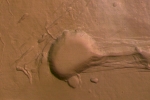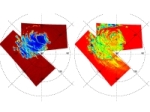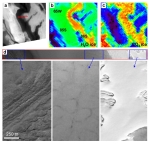Commissioning Almost Complete
Overall Mission StatusSince the last status report, the overall operational performance of the spacecraft and payload continued to be satisfactory. Some temporary problems were encountered with the Solid State Mass Memory (SSMM), which are currently under investigation.
Remaining payload-commissioning activities are being performed until mid-April. The MARSIS radar will be deployed on 20 April and subsequently the spacecraft will be fully commissioned.
Spacecraft resources, in particular power usage, are still constrained as Mars Express has encountered the first eclipse season, although the duration of eclipses per orbit is now slowly decreasing every day.
Scientific Payload Status
The status and performance of the orbiter payload in Mars orbit is excellent, with new high-resolution stereo and colour images and high-resolution spectral measurements of the planet being acquired, and further radio science data collected.
The orbit of the Mars Express spacecraft continues to be very stable. Imaging instruments and spectrometers have begun global coverage science data acquisition. In particular, HRSC and OMEGA have started to perform mosaic and map construction.
Since the last status report the following science material has been released:
| 30 March 2004 |
|
PFS - Evidence of Methane
Observations by the PFS instrument indicate that methane is present in the Martian atmosphere. The measurements so far suggest that the amount of methane present is about 10 parts per billion. |
|
|
| 22 March 2004 |
HRSC - Ascraeus Mons
The image reveals formations associated with volcanic activity that have also been witnessed on Earth, and elsewhere in the Solar System. The lava tubes are caused by crusting which occurs over a lava channel, effectively turning it into a tunnel. If the tunnel empties of all its lava then it will collapse and leave depression on the planetary surface. |
 |
|
| 17 March 2004 |
OMEGA - Water Evidence Confirmed
Further analysis of OMEGA measurements at the Martian south pole have confirmed the presence of water ice. The majority of the water ice is in a permafrost region surrounding the central polar cap. The composition of this region is thought to be 15% water ice and 85% carbon dioxide ice. The measurements were made between 18 January and 11 February 2004 - when summer was coming to an end at the southern cap. This meant the polar cap was at its smallest extent. In the coming months scientists expect the polar cap to grow in size (as atmospheric carbon dioxide freezes onto the pole) and cover some of the permafrost region. |


|
|
| 1 March 2004 |
HRSC - Hecates Tholus
The summit caldera of Hecates Thous, the largest volacno in the Elysium volcano group. The caldera shows multiple collapses caused by the emptying of the underlyig magma chamber. On the sides of the volcano there is evidence for lava flow features. |

|
Last Update: 1 September 2019




